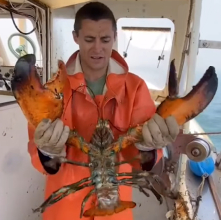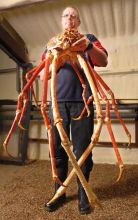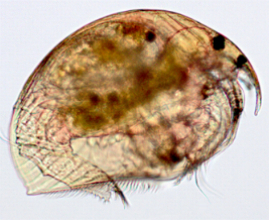 Crustaceans are invertebrate animals that constitute one group of arthropods that are mainly aquatic, that includes shrimp, prawns, crabs, lobsters and crayfish, as well as krill, isopods, barnacles, and mantis shrimp. In addition to being mostly aquatic, crustaceans differ from other arthropods in having two pairs of appendages (antennules and antennae) in front of the mouth, and paired appendages near the mouth that function as jaws. The largest crustaceans include the American lobster, which can reach a weight of 20 kilograms, and the giant Japanese spider crab, which has legs that can span up to 3.7 metres. Some of the smallest include water fleas that reach lengths of less than 0.25 millimetre.    Crustaceans are found mainly in water, both fresh water and seawater. Various species have occupied almost every possible niche within aquatic environments. An enormous population of free-swimming plankton species occupies the open waters of lakes and oceans, providing a key food source for fish, seabirds, and whales. Other species live at the bottom of the sea, where they may crawl over the sediment or burrow into it. Different species are found in rocky, sandy, and muddy areas. Some species are so small that they live in the spaces between sand grains. Some have been found in oceanic trenches at depths of up to 10,000 metres. |